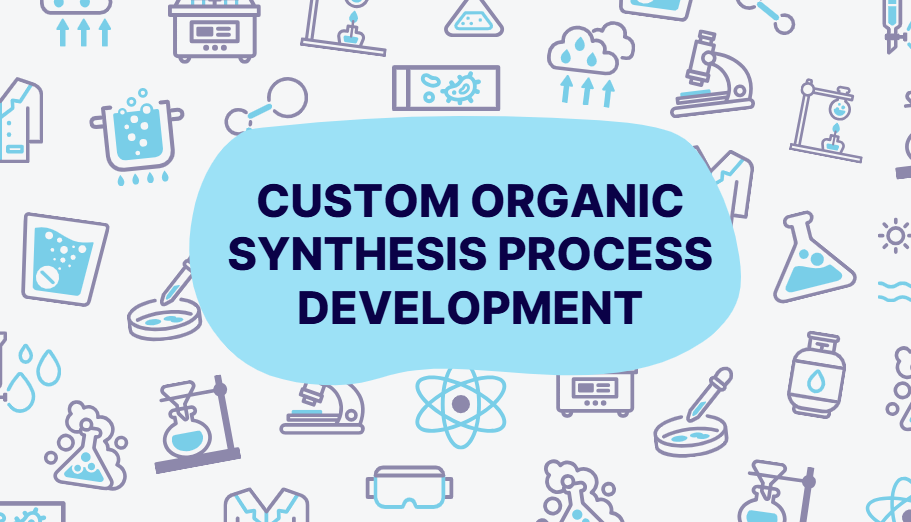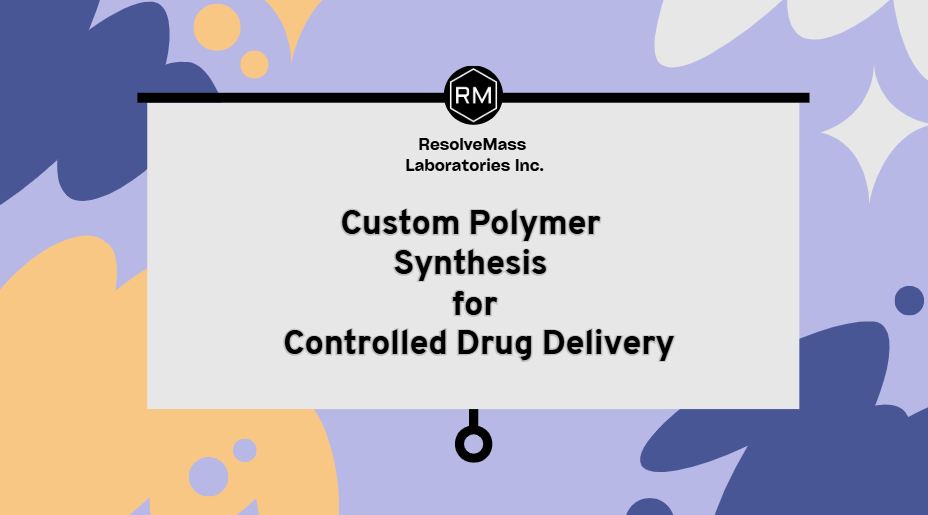In today’s rapidly evolving world, the importance of polymer synthesis cannot be overstated. It serves as the backbone for innovation in industries ranging from healthcare and electronics to aerospace and environmental sustainability. Through advanced techniques like custom polymer synthesis, scientists are tailoring polymers to meet specific requirements, driving progress across scientific disciplines and industrial applications.
This blog delves into the critical role of polymer synthesis, its applications, the challenges it addresses, and its contribution to shaping modern science and technology. For more insights into related analytical services, explore our Antibody Sequencing Services.
Curious how polymer synthesis started? Read this – A Brief History of Polymer Synthesis: Key Milestones
Understanding Polymer Synthesis
Polymer synthesis involves the chemical processes by which monomers (small molecular units) are combined to create polymers, long chains or networks with repeating structural units. These macromolecules exhibit unique properties such as high strength, thermal stability, and flexibility, making them indispensable in modern applications.
Custom polymer synthesis allows the development of materials with precise characteristics, such as specific molecular weights, chemical functionalities, and architectures. This approach has revolutionized industries by enabling solutions for complex challenges, such as drug delivery, material durability, and environmental conservation [1].
Learn how we build custom polymers step by step. Step-by-Step Guide to Custom Polymer Synthesis Process
Key Methods of Polymer Synthesis
Polymer synthesis techniques can be categorized into several types, each offering distinct advantages for different applications:
1. Addition (Chain-Growth) Polymerization
In this process, monomers with double bonds form polymers through a stepwise mechanism initiated by free radicals, anions, or cations.
Examples:
- Polyethylene (PE): Commonly used in packaging.
- Polystyrene (PS): Widely used in insulation and consumer goods.
Custom variations of addition polymerization are used to create copolymers and block polymers with specialized functionalities [2].
2. Condensation (Step-Growth) Polymerization
This method involves the reaction of two or more monomers, with the elimination of small byproducts such as water or methanol.
Examples:
- Polyesters: Used in textiles and medical sutures.
- Nylons: Critical for automotive and industrial applications.
Condensation polymerization has been pivotal in developing high-performance materials like polycarbonates, which are used in lenses and electronics [3].
3. Controlled Polymerization Techniques
Advanced methods like Reversible Addition-Fragmentation Chain Transfer (RAFT) and Atom Transfer Radical Polymerization (ATRP) allow precise control over polymer architecture. These methods are instrumental in creating polymers with uniform molecular weights, ideal for drug delivery systems and nanotechnology applications [4].
Great explainer for chain vs. step-growth techniques. A Comprehensive Guide to Polymerization Techniques: Step-Growth vs Chain-Growth
Applications of Polymer Synthesis in Modern Science and Technology
1. Healthcare and Biotechnology
Polymers synthesized for biomedical applications are transforming healthcare. Biodegradable polymers like polylactic acid (PLA) are used in sutures, implants, and controlled drug delivery systems.
Custom Polymer Synthesis in Pharmaceuticals:
- Creating nanocarriers for drug delivery that target specific cells, improving therapeutic efficacy [5].
- Developing hydrogels for tissue engineering and wound healing.
Explore more on our Custom Polymer Synthesis Solutions.
See how polymers help deliver insulin orally. Cyclodextrin-Based Dendrimers: A Promising Tool for Oral Insulin Delivery
2. Environmental Sustainability
Polymer synthesis is playing a crucial role in addressing global sustainability challenges by enabling the development of biodegradable plastics and recyclable polymers.
Examples:
- Polylactic acid (PLA): Derived from renewable sources like corn starch, used in packaging and biodegradable utensils.
- Polyhydroxyalkanoates (PHAs): Biopolymers synthesized by microbes, replacing traditional petroleum-based plastics [6].
Want to know where polymers are headed next? Read this – Emerging Trends in Custom Polymer Synthesis for 2025 and Beyond
3. Electronics and Photonics
Polymers with electrical conductivity, such as polyaniline and polythiophene, are enabling innovations in flexible electronics, organic light-emitting diodes (OLEDs), and photovoltaic cells.
Applications:
- Conductive Polymers: Used in wearable sensors and electronic displays.
- Polyimides: Provide thermal stability for aerospace electronics [7].
See how global markets are using smart polymers. Global Market Insights: The Future of Custom Polymer Synthesis
4. Aerospace and Automotive Industries
Lightweight and durable polymers have transformed the aerospace and automotive industries. Carbon-fiber-reinforced polymers (CFRPs) are essential for reducing vehicle weight, improving fuel efficiency, and enhancing performance.
Examples:
- Epoxy Resins: Used in aircraft components for strength and durability.
- Polyetheretherketone (PEEK): A high-performance polymer for aerospace and automotive applications.
Wondering which type of polymer is better? Start here – Thermoplastic vs. Thermosetting Polymers: Insights for Custom Polymer Synthesis
Challenges Addressed by Polymer Synthesis
1. Material Durability
Polymers synthesized with enhanced thermal and chemical resistance are critical for industrial applications.
2. Drug Delivery
Custom polymer synthesis enables the development of nanostructures like micelles and dendrimers for precise drug delivery [8].
3. Environmental Concerns
By utilizing renewable monomers and green chemistry principles, polymer synthesis contributes to sustainable material development.
Purity matters – How to Ensure High Purity in Custom Polymer Synthesis , this shows you why.
The Role of Custom Polymer Synthesis
Custom polymer synthesis provides the flexibility to design materials with tailored properties for niche applications. At ResolveMass Laboratories Inc., we specialize in creating custom polymers for diverse needs, including biomedical devices, industrial coatings, and sustainable packaging.
Explore our cutting-edge Custom Polymer Synthesis Services and related analytical capabilities like Antibody Sequencing Services.
The Future of Polymer Synthesis
The future of polymer synthesis is being shaped by advancements in:
- Green Chemistry: Designing sustainable polymers from renewable sources [9].
- AI and Machine Learning: Predicting polymer properties and streamlining development.
- Nanotechnology: Creating nanoscale polymers for targeted therapies and advanced materials.
With the integration of these innovations, polymer synthesis will continue to drive technological progress.
See which method works best for future projects – Choosing the Best Method for Custom Polymer Synthesis
Conclusion
Polymer synthesis is the cornerstone of modern science and technology, enabling breakthroughs in healthcare, electronics, sustainability, and more. As industries demand increasingly specialized materials, custom polymer synthesis is rising to meet these challenges.
At ResolveMass Laboratories Inc., we are at the forefront of polymer innovation, delivering tailored solutions for every need. Contact us to learn how our expertise in polymer synthesis can empower your next breakthrough.
References
- Carothers, W. H. Fundamentals of Polymerization. Polymer Chemistry, 2022. DOI: 10.1016/j.polychem.2022.01.001
- Odian, G. Principles of Polymerization. Polymer Science Advances, 2021. DOI: 10.1021/acs.polymchem.1c00234
- Brown, L. High-Performance Polymers in Modern Industry. Macromolecular Chemistry, 2020. DOI: 10.1007/s10853-020-04567-9
- Matyjaszewski, K. Controlled Radical Polymerization Techniques. Advances in Polymer Chemistry, 2021. DOI: 10.1002/polchem.1c00456
- White, H. Biodegradable Polymers in Medicine. Biomaterials Journal, 2022. DOI: 10.1016/biomat.2021.12.456
- Lee, P. Green Polymers for a Sustainable Future. Environmental Chemistry Reviews, 2020. DOI: 10.1021/envchemrev.1c00321
- Zhao, M. Polyimides for Aerospace Applications. Materials Science Advances, 2019. DOI: 10.1016/matsci.2019.09876
- Jain, R. Dendrimers in Targeted Drug Delivery. Nanomedicine Advances, 2021. DOI: 10.1016/nanomed.2021.06.078

